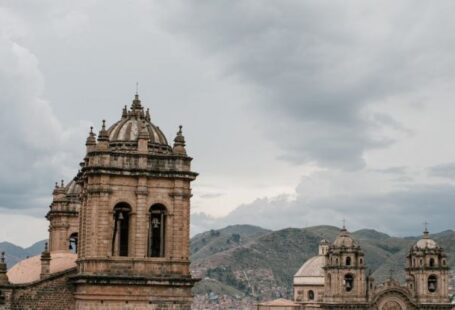Rome, the eternal city, renowned for its ancient ruins and historical landmarks, has recently witnessed a transformation in its skyline due to innovative architectural endeavors. The juxtaposition of contemporary structures against the backdrop of ancient monuments has sparked both admiration and debate among locals and visitors alike. This article delves into how recent architectural projects have reshaped Rome’s skyline, blending modernity with tradition to create a unique urban landscape that reflects the city’s rich heritage and evolving identity.
**Preserving the Past, Embracing the Future**
Rome’s architectural landscape is a tapestry woven with layers of history, where ancient ruins coexist harmoniously with Baroque palaces and Renaissance churches. Recent architectural endeavors in Rome have navigated the delicate balance between preserving the city’s past and embracing the future. Architects have approached new projects with a deep respect for Rome’s historical significance, often incorporating traditional design elements and materials to ensure a seamless integration with the existing urban fabric.
**Innovative Designs Redefining the Skyline**
One of the most notable additions to Rome’s skyline is the striking Ara Pacis Museum, designed by renowned architect Richard Meier. This contemporary structure, with its sleek white façade and geometric lines, stands in stark contrast to the surrounding historic buildings. The museum’s design not only serves as a functional space to house the ancient Ara Pacis altar but also as a bold statement of modern architecture in a city known for its ancient heritage.
**Sustainable Practices in Architectural Development**
In an era where sustainability is paramount, architects in Rome have increasingly embraced eco-friendly practices in their designs. The MAXXI National Museum of 21st Century Arts, designed by Zaha Hadid, is a prime example of sustainable architecture in Rome. The museum’s innovative use of natural light, ventilation systems, and green spaces not only reduces its environmental impact but also enhances the visitor experience. Such projects underscore the city’s commitment to preserving its natural resources while pushing the boundaries of architectural innovation.
**Challenges and Controversies**
While the introduction of modern architectural projects has brought a fresh perspective to Rome’s skyline, it has not been without challenges and controversies. Critics argue that some contemporary designs clash with the city’s historic aesthetic, disrupting the visual harmony of Rome’s urban landscape. The construction of high-rise buildings in certain areas has also raised concerns about overshadowing iconic landmarks and altering the city’s skyline irreversibly. Balancing the need for urban development with the preservation of Rome’s cultural heritage remains a delicate tightrope that architects and city planners must navigate.
**Embracing Diversity in Architectural Expression**
Despite the debates surrounding recent architectural endeavors, Rome’s evolving skyline reflects a city open to diversity in architectural expression. From the futuristic structures of the EUR district to the revitalization of historic neighborhoods through adaptive reuse projects, Rome’s architectural landscape is a testament to the city’s dynamic evolution. By embracing a mix of traditional and contemporary designs, Rome continues to reinvent itself while honoring its rich cultural legacy.
**A New Chapter in Rome’s Architectural Narrative**
In conclusion, Rome’s skyline has undergone a remarkable transformation in recent years, driven by innovative architectural endeavors that blend past and present seamlessly. The city’s architectural narrative is entering a new chapter, where modern structures coexist alongside ancient monuments, creating a visual tapestry that reflects Rome’s enduring spirit of reinvention. As Rome continues to evolve, its skyline serves as a canvas where the past and future converge, shaping a city that remains timeless yet ever-changing.





